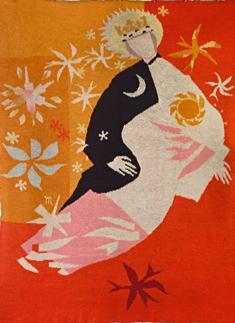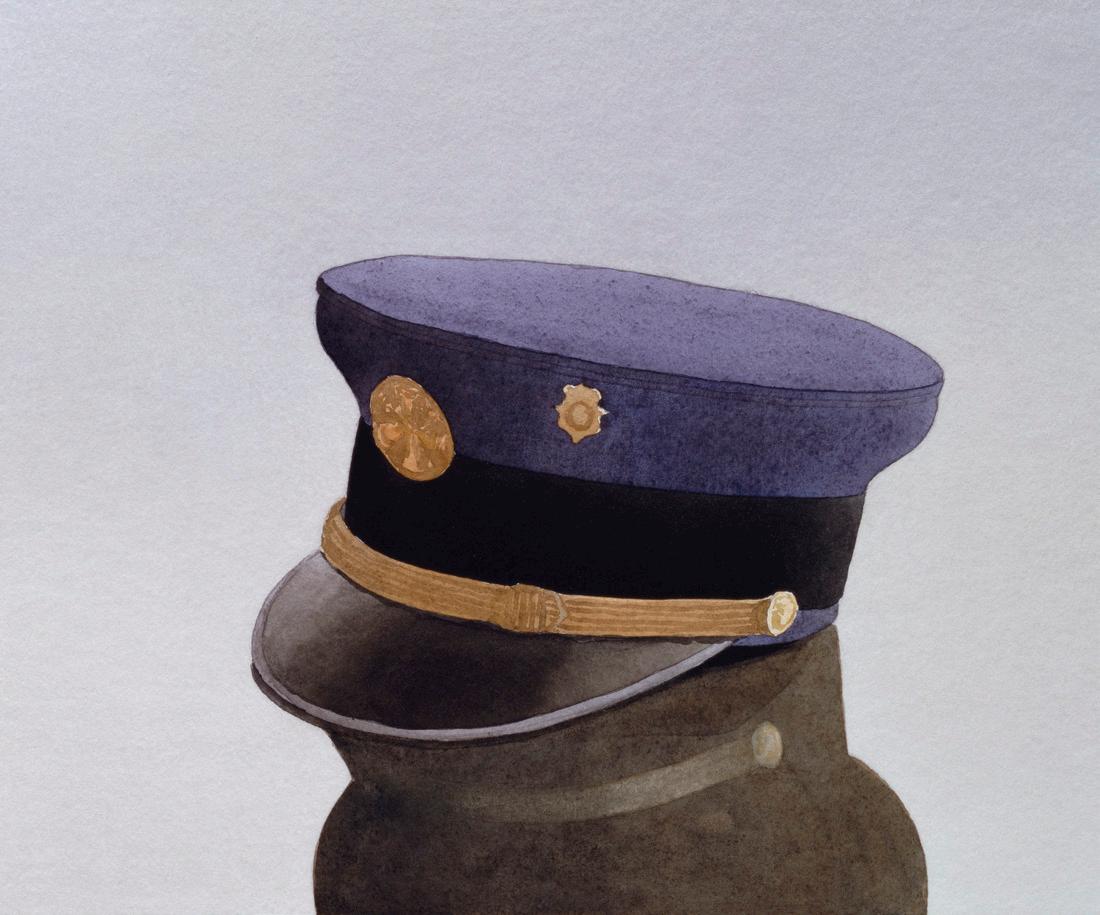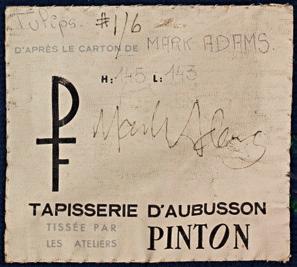Mark Adams Melissa Leventon
Mark Adams wrote these words in 1991 after thirty-five successful years of designing
…[T]he hardest part of tapestry making is creating
tapestries—more than a hundred in total—that were thoroughly modern in both form
a design so appropriate for tapestry that it would
and subject. An unusually versatile artist, Adams, who trained as a painter at Syracuse
not be successful in any other medium.
University and with Abstract Expressionist Hans Hofmann, worked in tapestry, mosaic, prints, and stained glass, as well as several forms of painting, creating works of art both
—Mark Adams
large and small that ran the gamut from realism to abstraction. But it was in tapestry that he had his earliest success, and they remain among his most important works of art. Tapestry, with its architectural scale, long figurative tradition, and idiosyncratic use of color, first drew Adams’s attention in the late 1940s, when he saw both the medieval tapestries at the Cloisters in New York and an exhibition catalogue of modern French tapestry. Adams’s continuing interest in representational art, despite his training in abstraction, his desire to work in large scale, his interest in religious subjects, and a Matisse retrospective he saw at the Philadelphia Museum of Art that expanded his understanding of the effects color and form could have on spatial dynamics undoubtedly contributed to his interest in designing tapestries himself. To learn how, Adams apprenticed himself in 1955 to Jean Lurçat, widely regarded as the architect of modern French tapestry. Lurçat, also a painter, had reinvigorated traditional Aubusson weaving by reintroducing some key features of medieval tapestry: 1. Use a robust coarse weave. 2. Use a simplified palette of color. 3. Build the design on strong value contrasts. 4. Use shading that is unique to weaving. In so doing, Lurçat strove to divorce tapestry design from its adherence to painterly aesthetics, which he and many others blamed for the medium’s centuries-long decline. He went so far as to refuse to paint his design cartoons (the full-size designs from which tapestries are woven), instead drawing the outlines and indicating colors by number. Adams, who spent four months studying with Lurçat in France, preferred to fully paint his
opposite: 23. Beth Van Hoesen (1926 – 2010) Mark Adams (Study for Watercolor), 1980
21










